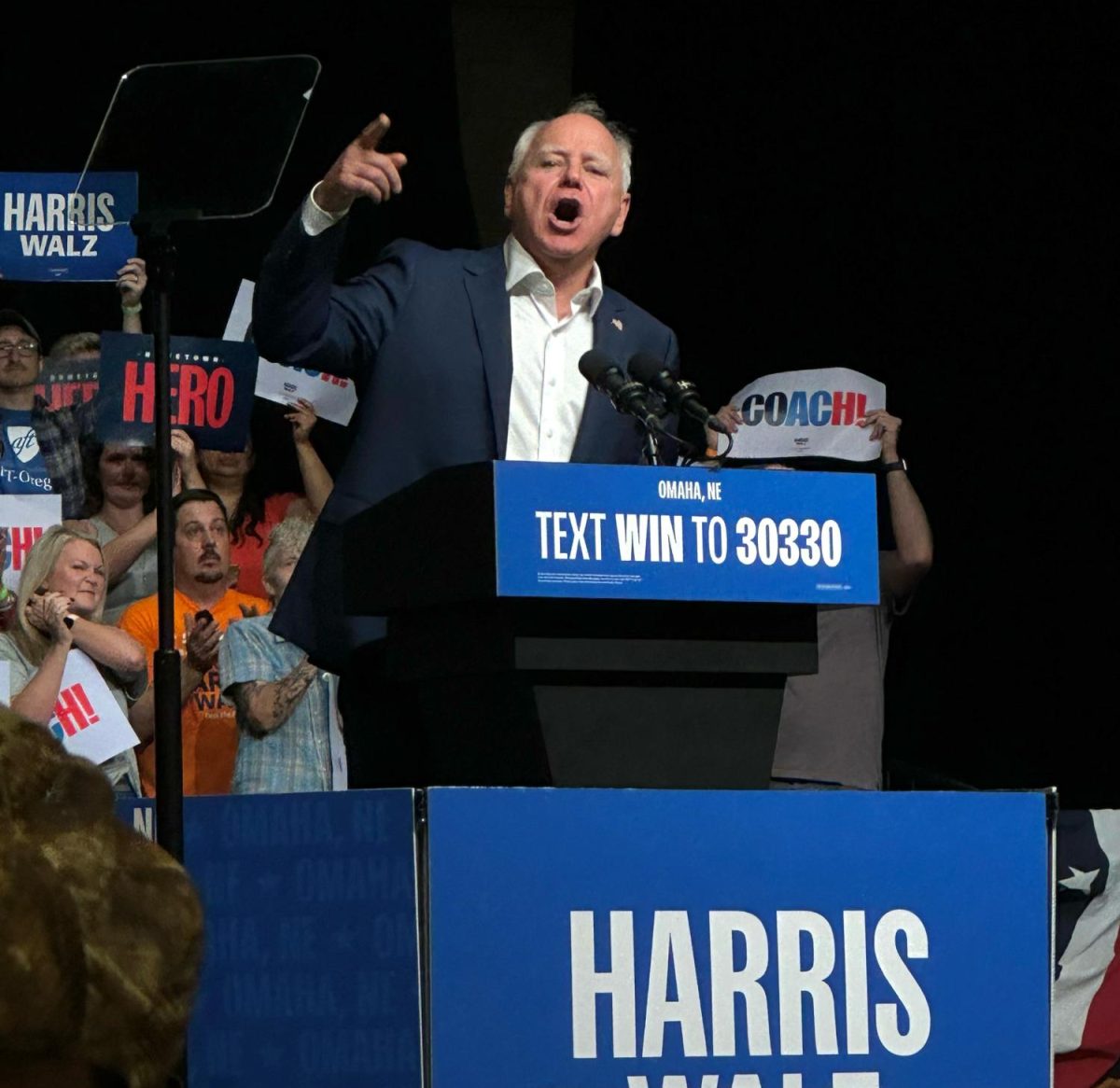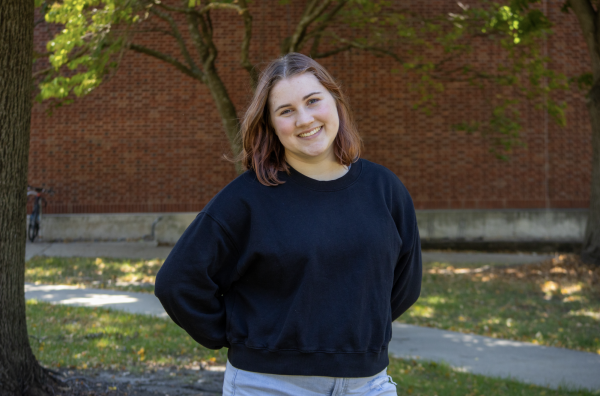One word propelled Minnesota Gov. Tim Walz from a relatively unknown but popular governor to the Democratic presidential ticket. On July 23, Walz appeared on MSNBC’s “Morning Joe,” where he called former President Donald Trump and his running mate J.D. Vance “weird.” Walz’s words went viral and other Democrats embraced his characterization of Trump and his supporters.
When choosing her running mate, presidential candidate and current Vice President Kamala Harris had a large pool of governors, senators and other political figures from across the country to choose from. Walz had previously been an unlikely pick, but his newfound fame sent Walz to the top of Harris’ list. On Aug. 6, Harris’ campaign announced that she had chosen Walz as her running mate.
Although President Joe Biden’s withdrawal from the presidential race and Harris’ entrance energized Democrats across the country, some Minnesotan Democrats at Drake say that Walz’s addition to the campaign is also changing the race in their home state.
“It made me so proud as a Minnesotan to see my awesome governor up there for the whole world to see. It just brought a bunch of eyes on to Minnesota in a good way,” said senior Riley Jouppi, a native of Minneapolis suburb Crystal. “I have not felt more hope over an election in a very, very long time.”
Jouppi added that her family is proud to support a Harris-Walz ticket and several of her family members have donated to the campaign.
Sophomore Sadie Jones, a native of St. Paul suburb Cottage Grove, found the June 27 debate between Biden and Trump frustrating. Although she had still planned to vote for Biden in November, her vote would have been reluctant.
“Now, when I go to vote, the way that Walz is changing my vote is that it will be enthusiastic,” Jones said. “I will be happy when I am sending in that absentee ballot.”
Junior Reid Stevens believes Walz also appeals to some more conservative Minnesotans. Stevens is from Isanti, a rural town of about 7,000 residents 45 minutes north of the Twin Cities. Trump won Isanti County, where Isanti is located, with nearly 70% of the vote in 2020.
In a mock election at Stevens’ high school in 2018, Tim Walz won the gubernatorial race. Although Stevens believes most of the students at his school leaned Republican, he said this mock election showed Walz’s ability to draw White, Christian and traditionally conservative voters.
“He has the ability to connect with those types of voters as he did in Minnesota, which I think is a big reason why he was considered and then given the nod of the VP candidate in Kamala Harris’s campaign,” Stevens said. “I’ve seen him appeal to those types of voters who typically vote red.”
Although Stevens doesn’t think Walz’s candidacy will convince pro-Trump Isanti residents to vote blue, he has seen a difference in Isanti since Harris and Walz made the Democratic ticket: the Trump signs remain up, but his neighbors’ “Let’s go Brandon” signs haven’t been replaced with anti-Harris or anti-Walz rhetoric.
“It seems like people who lean red, who are very strong and vocal Republicans, they’re a lot less vocal about the Walz and Harris ticket,” Stevens said. “But maybe that’s just because they hadn’t had time to get a new zinger yet.”
Outside of policy, Stevens thinks one reason many rural Minnesotans wouldn’t consider voting for Walz and the Harris-Walz campaign is because they don’t feel that Walz prioritizes them as much as the Twin Cities area.
“When Taylor Swift and Beyonce came in their massive headliner tours two summers ago to Minneapolis, he would do stuff as a welcome like declaring a day, like Taylor Swift day or Beyonce day, across the state,” Stevens said. “I know that a lot of that rubbed a lot of people the wrong way of, first of all, being very focused on making the whole state about just Minneapolis and St. Paul, and also, to them, it just seemed like some kind of a trivial thing instead of focusing on maybe issues that matter more to them.”
Junior Clara Willette of Minneapolis believes Walz’s strengths lie in communicating progressive policies in a way that appeals to a broader demographic than just voters that agree with him, a skill he demonstrated during his time in Congress.
“I feel like he’s good at messaging it as just, ‘This is good, this helps kids eat, and that’s a good thing,’ instead of things that can easily be spun by more conservative people as socialist policies,” Willette said.
In the month since Walz was announced as Harris’ vice presidential pick, the Harris-Walz campaign has continued using social media to promote the candidates. The campaign’s TikTok account “KamalaHQ” uses trending sounds and popular references to highlight Harris and Walz, talk about policy and to make fun of the competition, using Walz’s strategy of portraying Trump and Vance as the “weird” ones.
“I just love that Harris and Walz, they’re kind of leaning into the internet culture and using it to their advantage,” Jouppi said. “I swear that’s what’s going to swing some of the people who are kind of in between.”









